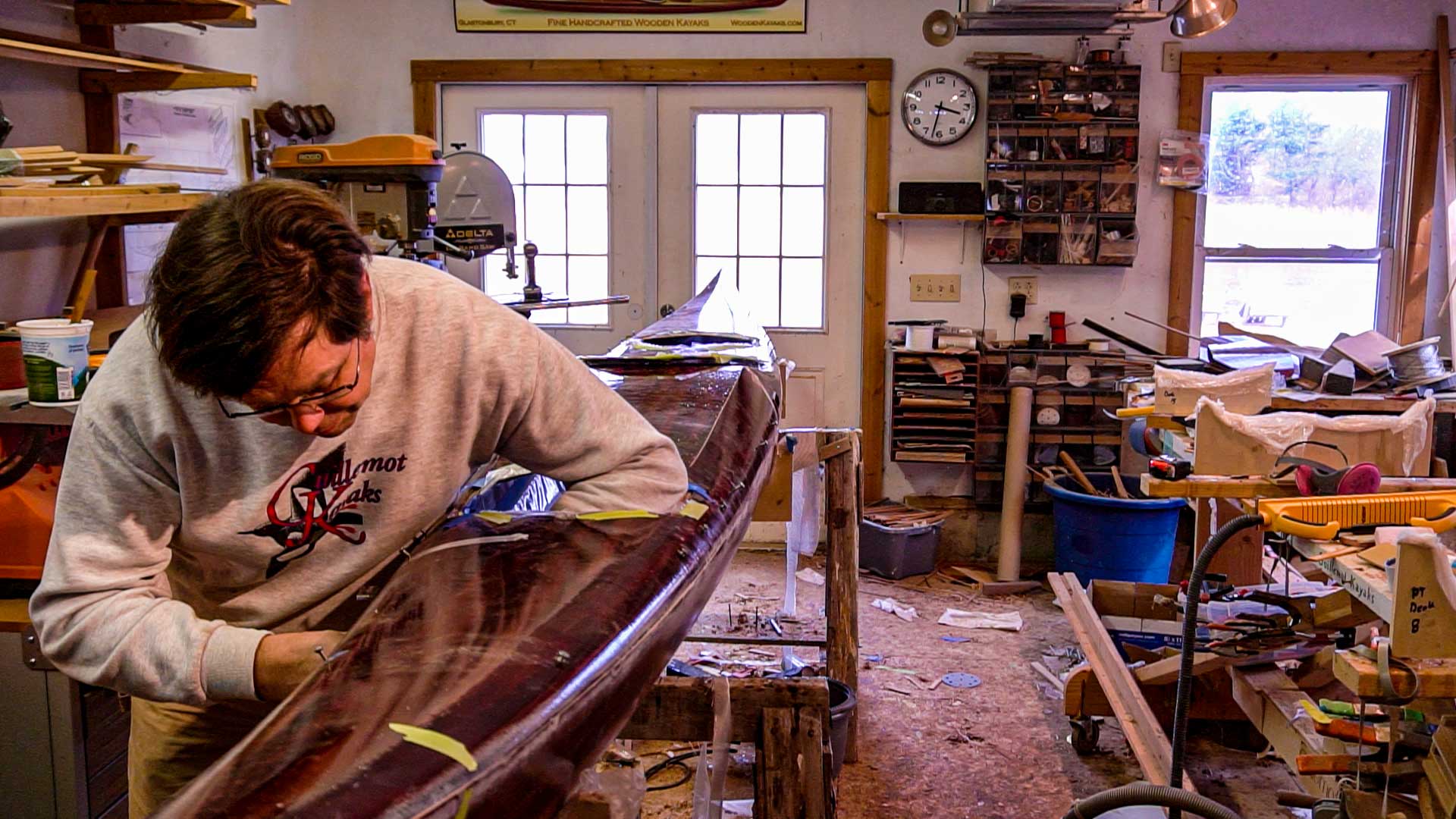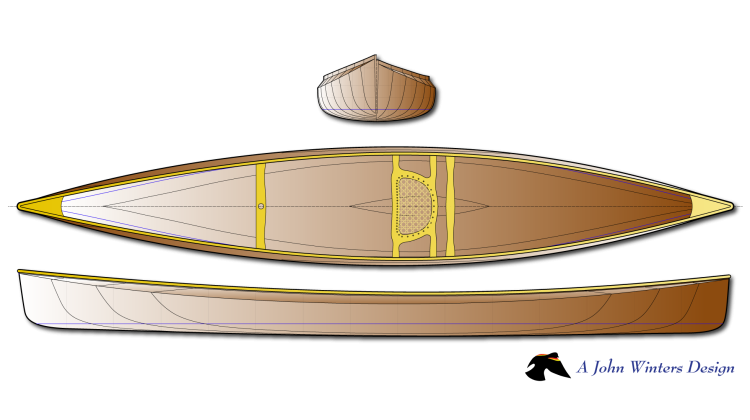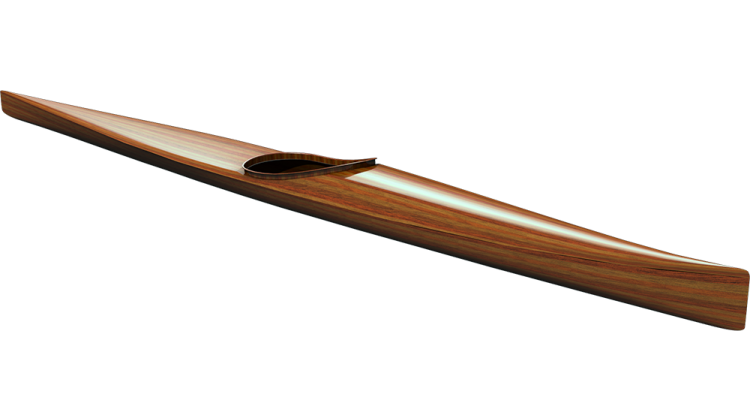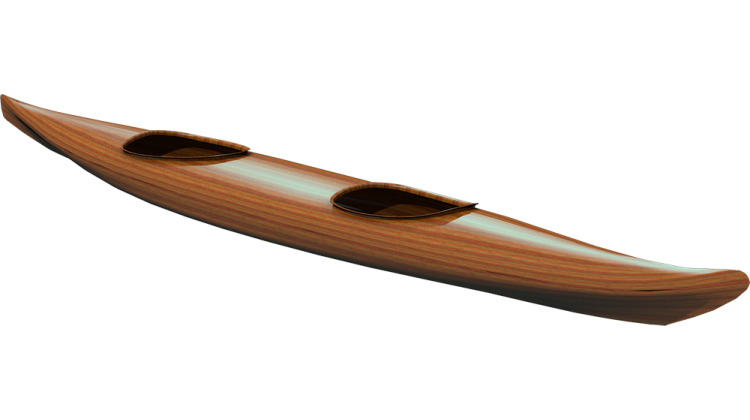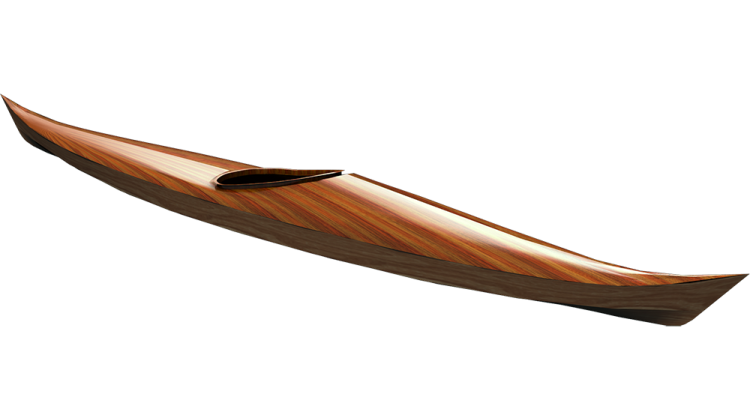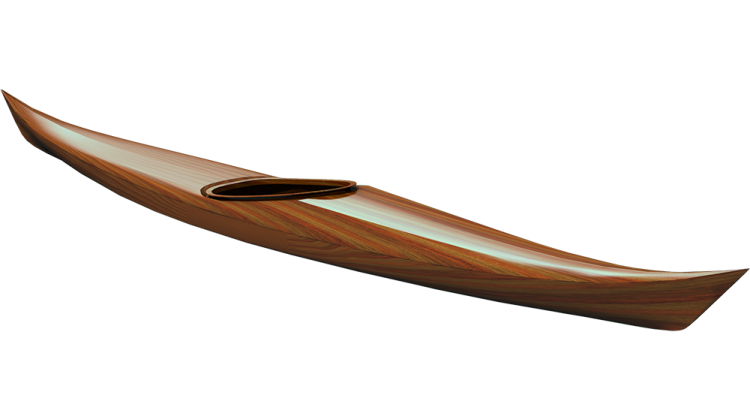It is very common that the deck and hull don’t match when you go to put them together. Maybe humidity got to the wood between glassing the outside and the inside or, the opposite, the wood dried out. Or it could be that the deck or hull sagged a bit while sitting on the saw horses. Even just a little bit of shrinking of the epoxy can distort the shape a little bit. It doesn’t matter, because it is usually not that big a deal to get the parts to fit.
Even with glass on both sides the deck and hull are still quite flexible. They are most flexible while the epoxy is still fresh, but as the days, weeks and months go by the epoxy does harden a bit, but I have joined together kayaks where the deck and hull were several inches different, the epoxy was 3 years old and way too much epoxy was used. It was extremely stiff, but I could compress or expand the two parts enough that they joined together perfectly. I used nothing more than the packing tape I normally use.
The packing tape holds the two pieces in alignment by the friction created along the sheer line due to the pressure from the packing tape pulling the seam tight. If you don’t pull the packing tape tight, the seam will slide apart and pop. The key to making it work is pulling the tape very tight. I use a metal tape dispenser (such as: https://amzn.to/35ftdi6) because it allows me to pull the tape very tight with one hand while holding the boat with the other and then cut the tape without letting go of the tension.
Starting in the middle of the boat in the cockpit area, stick the tape to the deck (fold over the free end of the tape first so you can peel it up when its time). Hold on to the tape with the tape dispenser in your strong hand. Pull some tension in the tape as you reach in the cockpit with your other hand, to push the seam together. Press your chest or stomach against the outside of the boat to help get the two pieces aligned. As the sheer comes together, increase the tension on the tape.
Don’t pull too much tape out at first. Use the metal lever on the tape dispenser as brakes to keep tape from pulling out as you put tension on it.
Hold on to the boat with your free hand while you pull. You are trying to pull the tape hard enough that the seam does not pop apart. If your boat is still fairly flexible or the deck and hull are not that far apart, it may not need much pressure, but a large gap or stiff boat may require some grunting or cussing as you pull. Be prepared to pull hard. Get in a position where you are comfortable pulling and can see what you are doing
As you pull the tape down over the seam, use your free hand to press the tape down on to the surface so it adheres well. Once it is stuck down 4 — 6-inches on to the hull, you can let up on your tension and use the teeth on the dispenser to cut the tape.
If the seam pops, try again and pull the tape harder. You might want two or three pieces of tape beside each other on really recalcitrant seams.
Go to the other side of the boat and do the same. Once you have it taped down on both sides, you are usually over the hardest part as the rest of the seam will not have to move as far. There are then two strategies: divide-and-conquer or a-little-at-a-time. You can split the difference between the middle and the ends, working at the hatches if you have them working on the largest gaps first, or work in close to the existing tape and slowly “zipping” up the seam where the least movement is needed. Both work, see what works for you.
If you are really struggling, you can put spacers in the narrower piece to bring it out to meet the wider piece. But remember you will need to get the spacers out before fiberglassing the inside seam. This might mean strings tied to spacers beyond your reach. Be careful removing the spacers as it is an opportune time for the seams to pop with the sudden change in pressure on the tape.
Some people use cam-straps to help pull the wider piece together. These can be a bit tricky to manage as they also for the smaller piece inside the larger piece, but maybe useful in some situations.
Don’t worry about breaking the boat because you are flexing it too much. It is probably stronger than you are, and can handle the amount of bending needed to join together. It is uncommon but possible that you may put some stress in the cloth if you needed to bend the boat a lot. This can appear as white dots in the weave of the cloth. While these may not show up at first, they can appear if the boat is put in the sun which warms the epoxy making it slightly softer. I recommend putting the boat in the sun before you are completely done with your epoxy work to see if any problems like this show up. You can sand them out and patch with new glass and the problem will not appear again.
Bottom line: If your deck and hull don’t match in width, you can fix it.

